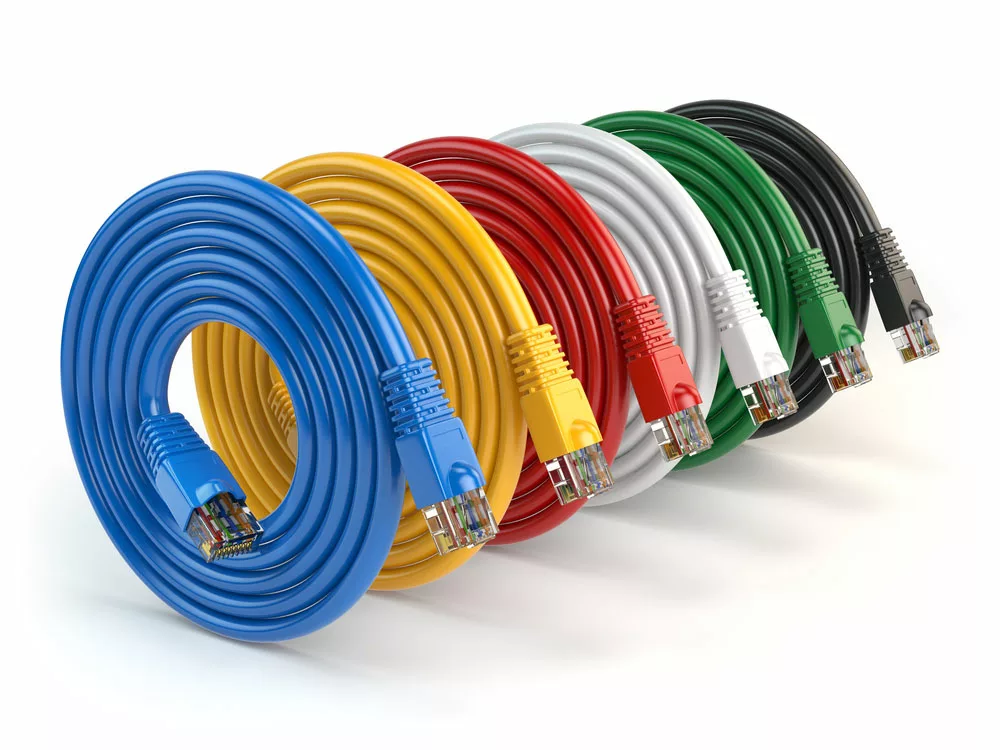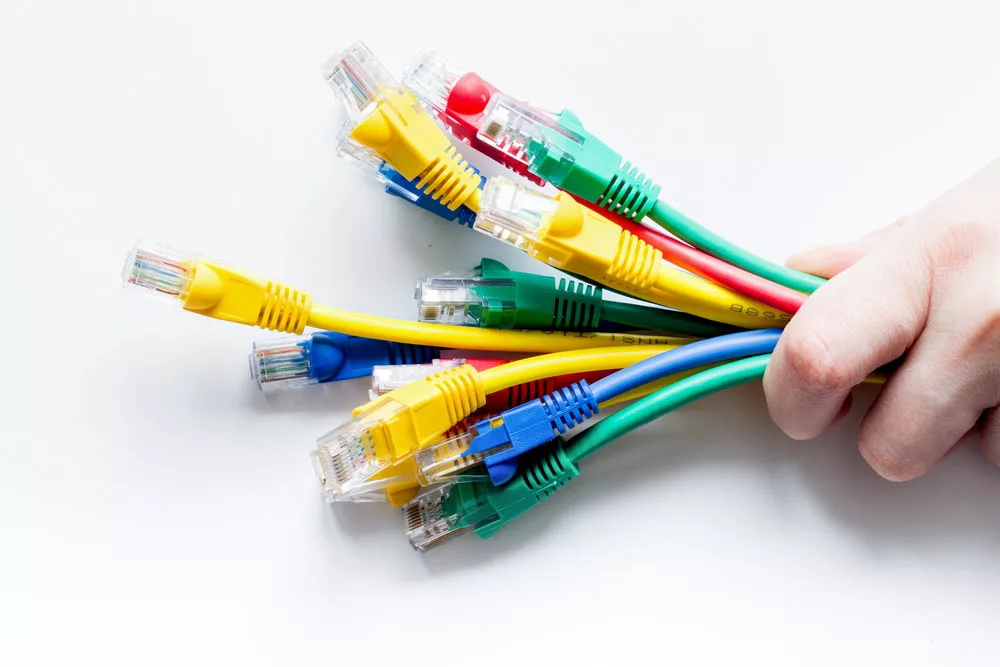Streaming music from your computer requires a high-quality ethernet cable connected to your speakers or stereo. But the limitless options available in the market and the lack of information on the best ethernet cable for audio streaming make choosing one tricky.
Are you a regular user? Your go-to ethernet cable for audio streaming should be Cat6a. But what if you’re not a standard user?
Although Cat6a has impressive bandwidth capacities and data transfer speeds, you may need something better. This article will explore the best options for audio streaming and more.
Are you ready? Let’s go!
Table of Contents
- How to Choose an Ethernet Cable for Audio Streaming
- What is the Best Ethernet Cable for Streaming Audio?
- Stranded Cables or Solid?
- Shielded Ethernet Cables vs. Unshielded
- Does an Ethernet Cable Improve Streaming Quality?
- Rounding Up
How to Choose an Ethernet Cable for Audio Streaming

Multiple ethernet cables
Although you have many options to sift through, the bandwidth capacity and data transfer are the first things to look out for in an ethernet cable. In truth, audio streaming requires up to 550 MHz bandwidth capacity and a 1 Gbps data transfer rate. But you can compromise with lesser speeds if your budget is tight.
Second, you should consider the cable’s conductor. Ideally, it should be pure copper with electromagnetic interference and crosstalk immunity. Also, you can access other options like Copper-clad aluminum conductors (CCA).
But it’s not as reliable as their full copper counterparts. And they don’t produce the same sound quality. In addition, CCA conductors are more susceptible to EMI and crosstalk.
Lastly, watch out for the cable jacket before making a purchase. The ideal cable jacket for audio streaming is the CMR (Communications Multipurpose Plenum-rated) variant. Why? Because its design can enhance your cable’s signal transmission, improving your overall audio quality.
What is the Best Ethernet Cable for Streaming Audio?

Hands are plugging ethernet cables.
Cat5e and Cat6 cables are the best ethernet options for audio streaming. In truth, Cat5e is the go-to for people with limited budgets, while Cat6 cables are ideal if you’re willing to spend more.
Let’s take a look at why these ethernet cables are the best of the best for audio streaming.
Cat5e Cables
These ethernet cables fulfill some of the minimum requirements for audio streaming. Also, they transmit data at speeds reaching 1 Gps over a 50 meters run length. Further, Cat5e has a 350 MHz bandwidth capacity.
Additionally, you can get them in different colors and jacket types. But the price varies depending on your preferred jacket. For instance, Plenum-rated variants cost slightly more than PVC or Riser-rated ones.
In addition, the Cat5e’s gigabit speed and voluminous bandwidth capacity make it a fantastic option for audio streaming. Thankfully, these ethernet cables are also affordable, considering their benefits.
Moreover, we recommend opting for solid bare copper Cat5e ethernet cables for the best audio streaming experience. Why? The solid copper conductor offers high-definition sounds that you can use indoors or outdoors.
Cat6 Cables
Cat6 ethernet cables are superior to their Cat5e counterparts in all aspects. So although these cables are slightly more expensive, you’ll get better performance in exchange.
Further, Cat6 cables can achieve up to 10 Gbps data transfer rate speeds over a 50 meters run length. And they can operate at bandwidth capacities of up to 550 MHz. In short, Cat6 is your go-to if you want the ultimate audio quality.
But for audio streaming, you can opt for even better ethernet cables, like the Cat6a. However, the Cat6a may be an unnecessary investment–because Cat6 cables can handle all your audio streaming needs, high-definition sound included.
Stranded Cables or Solid?

A hand holding multiple ethernet cables
The conductor’s integration is another factor before purchasing ethernet cables for audio streaming. As a result, you must choose between solid-core and stranded cables.
Typically, manufacturers build solid-core conductors from one conductor metal strain, while stranded core variants utilize multiple (at least 6) strains per conductor wire. But what’s the difference?
Solid conductors are sturdier, and they last longer than their alternatives. In contrast, stranded core variants offer more flexibility, but they snap if you twist them too much or frequently.
In short, solid core conductors take the win regarding audio streaming. And it’s because the conductor type offers lesser crosstalk and stable features. Also, you’ll get the finest sound quality with this conductor type.
Shielded Ethernet Cables vs. Unshielded
Purchasing the best ethernet cable for audio streaming requires choosing between shielded and unshielded variants. So what’s the difference between these types?
First, shielded ethernet cables feature extra protective layers around their conductors, while unshielded ones do not. Further, cable shielding can be in aluminum foil, braided wire, or both.
Second, shielded ethernet cables also offer some irresistible benefits. In addition to lasting longer, they stop conductors from transmitting external disturbances. Third, their designs are immune to EMI, helping to produce better sound quality.
But don’t disregard unshielded ethernet cables yet. In truth, they’re not bad options, and most ethernet cables you’ve used were probably unshielded. However, many prefer shielded ethernet cables, especially for outdoor use in spaces with many wires.
Does an Ethernet Cable Improve Streaming Quality?
Ethernet cables have zero effect on sound quality. How? The internet speeds you can access with standard variants can conveniently stream lossless audio files.
For example, lossless or high-fidelity audio has a maximum bitrate of 1.411 kbps, but ethernet cables can reach speeds of 100,000 kbps. So while your ethernet cable may not improve sound quality, you can rest assured that you’ll be streaming the highest quality audio.
Rounding Up
While Cat5e cables are excellent options for streaming video and audio, Cat6 offers the ultimate experience. These high-performance variants provide more data transfer rates and bandwidth than their Cat5e alternatives.
Although Cat6 ethernet cables can deliver faster load times and smoother playback (even when streaming in HD), Cat5 can suffice if you have a limited budget.
Do you have more questions on this topic? Be sure to contact us, and we’ll be happy to help.
